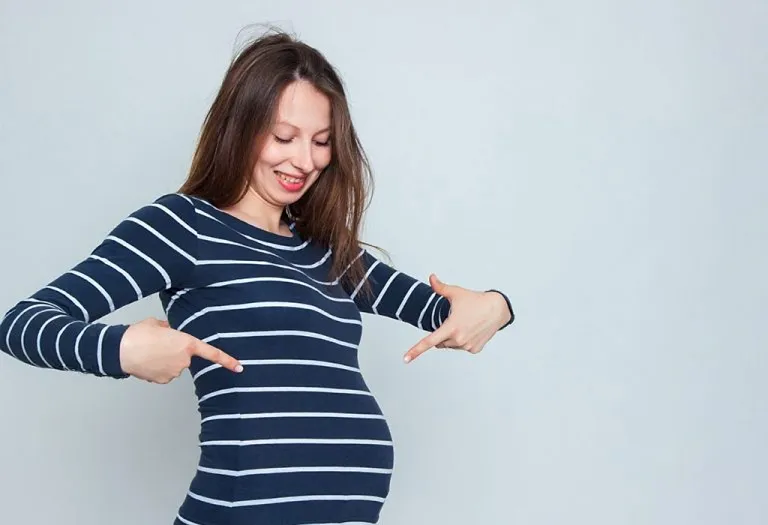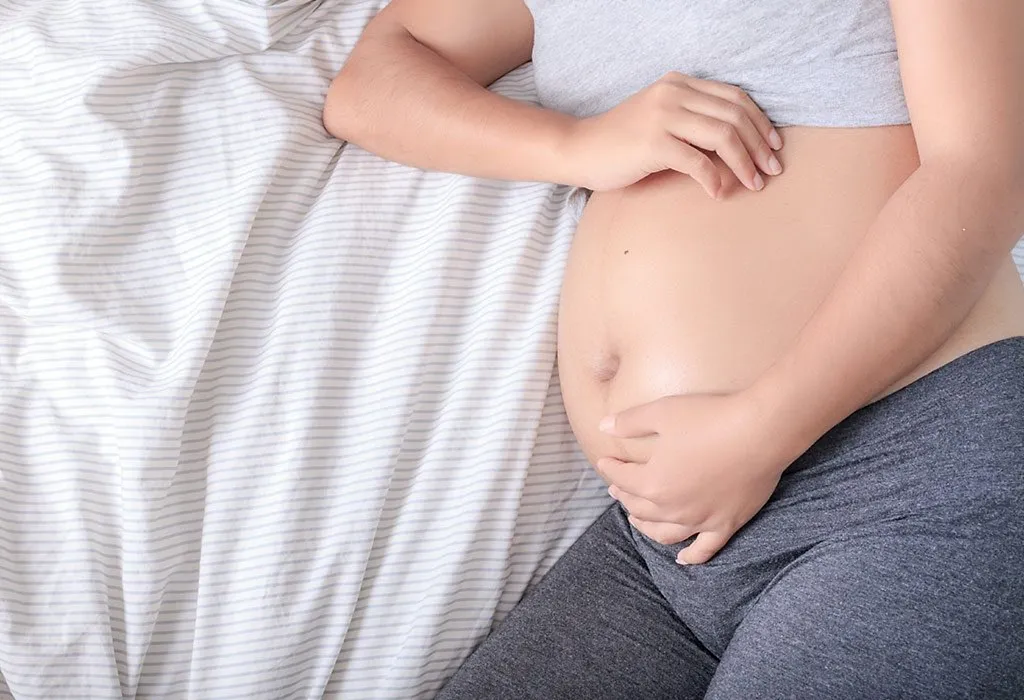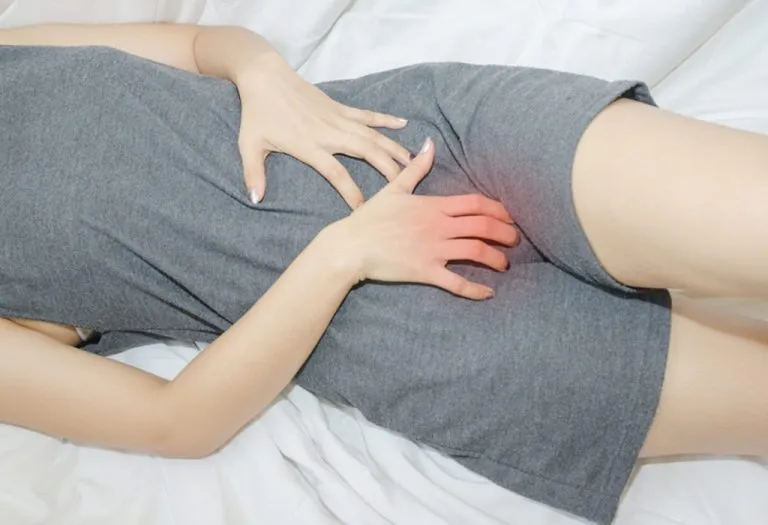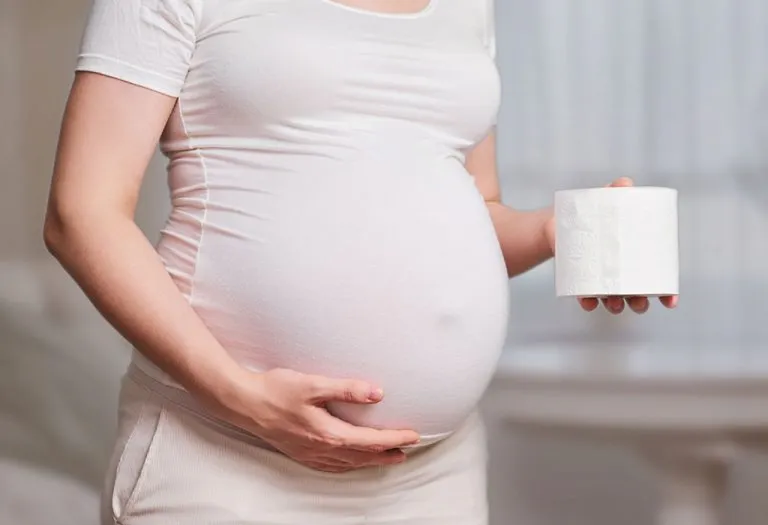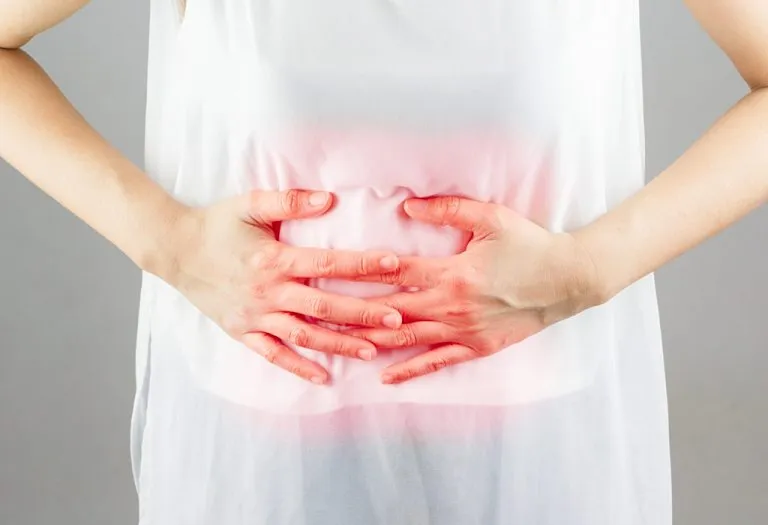Quickening in Pregnancy – Feeling Baby’s First Movements

As a mom-to-be, you obviously wonder when you would feel your baby’s movements. It’s only natural to be curious, and more so if you’re pregnant for the first time. In the early stages of pregnancy, it may be difficult for you to understand the various movements you would feel in the stomach. They could be your baby’s kicks, or it could simply be the stomach’s effort to push out the gas. But there will soon come a day when you’d actually feel your baby’s kicks, also known as quickening. And you must be eagerly waiting for that day. Let’s tell you about quickening during pregnancy!
What Is Pregnancy Quickening?
The first time when you feel your baby’s movements and begin to realise its presence, it is termed as pregnancy quickening (1). Many mothers tend to feel it as someone tapping from within, or a vibrating sensation as if a bird is taking flight. Some babies tend to make it feel as if they are punching or kicking around inside the body.
This is generally the time when your baby begins to undertake womb-based exercises on his own. It tries to make more space for itself and as you get closer to your due date, you will feel these movements even more strongly. Since this is one of the first markers that make it evident of the presence of a child, it is termed as quickening as if to refer to the quick way that the movement makes you aware of a child’s presence.
When and Where Can You Feel Your Baby’s First Movements?
The signs and symptoms of quickening during pregnancy will vary from one woman to another. Usually, a baby’s first movements can be felt between months 4 and 6 of pregnancy (2). Some pregnant women may experience quickening early, while others may experience it quite later.
First-time mothers take longer to realise these movements than mothers who have felt them in their previous pregnancies since these can also feel like gas rumblings. If you are slightly on the heavier side, it might take a little longer for the baby to make movements that can be evident. Also, if the front wall of the uterus is covered with the placenta, then all those movements will be cushioned and could make it difficult to be sensed.
In the earlier stages, the lower position of the uterus makes all these movements to be sensed in the lower part of the abdomen. But as the pregnancy progresses, they can be felt higher up in the abdomen, too.
What Are the First Foetal Movements Like?
First-time mothers are generally quite curious to know what does quickening feel like inside the body. When it comes to the signs and symptoms of quickening in pregnancy, the movements vary from baby to baby, which is why it feels different for everyone. At times, it feels like a flutter, or a tiny body tumbling inside your stomach, or a popping and pushing sensation, and many others (3).
These movements are weaker in the beginning. But, over time, you would easily tell if your baby punched or kicked. Some babies can be karate enthusiasts and make you feel a jab as well. All of these sensations are absolutely painless.
How Long Does Pregnancy Quickening Last?
At first, the fetal quickening is just a fleeting sensation—so gentle you might almost miss it. But as your baby develops, those little flutters grow into unmistakable kicks and stretches. You’re most likely to notice them when you’re still and quiet, not distracted by the hustle of daily life.
Difference Between Quickening, Cramps, and Kicking
Quickening refers to those first delicate flutters when you initially sense your baby’s presence. After this milestone, all subsequent sensations are simply called baby kicks, fetal movements, or general baby activity.
Cramps, on the other hand, stem from other sources—like your expanding uterus shifting position or ligaments stretching to accommodate your growing baby. These sensations often mimic menstrual-like discomfort and are unrelated to your little one’s movements.
How Frequently Do You Feel Quickening?
Early on, your baby’s movements follow no set rhythm. Doctors generally recommend starting kick counts only after 28 weeks, when you should notice roughly 10 distinct movements within two hours. Before this point, activity levels vary widely. Keep in mind that every pregnancy is unique—don’t panic if you feel fewer movements. Early on, subtle kicks might just be too faint to detect (4).
When to Call the Doctor
While baby movements are a reassuring sign, certain changes warrant medical attention. Here’s when to reach out to your healthcare provider. Call immediately if you notice (5):
- No movement by 24 weeks (if you haven’t felt any flutters or kicks by this point).
- A sudden decrease in movement (especially after 28 weeks)—fewer than 10 kicks in 2 hours after focusing on kick counts.
- Complete absence of movement for 12+ hours in the third trimester.
- Weak or sluggish movements (a dramatic change from your baby’s usual activity).
- No movement after eating/drinking something cold/sweet (a common trick to stimulate the baby).
- Pain with decreased movement (could indicate a problem with the placenta or umbilical cord).
- Bleeding or cramping alongside reduced movement.
FAQs
1. Does an anterior placenta delay quickening?
Absolutely. If your placenta is positioned at the front of the uterus (anterior), it can cushion kicks, making movements feel muffled or delayed until 22–26 weeks. Don’t panic—it’s normal, but mention it to your provider if concerned.
2. Can stress or caffeine affect a baby’s movement patterns?
Possibly. High stress or excessive caffeine may temporarily increase fetal activity (like a sugar rush). Conversely, dehydration or low blood sugar can reduce movements. Track patterns during calm moments for accuracy.
3. Why do some women feel quickening earlier in subsequent pregnancies?
Experience matters! Seasoned moms often recognise subtle movements as early as 14–16 weeks because they’re familiar with the sensation. First-timers might not identify them until 18–25 weeks.
This was all about quickening and pregnancy. We hope we’ve answered all your questions, including quickening in pregnancy—which month does it typically start? For a long time, the only sign of the baby’s presence for a mother is usually what she sees in the ultrasound. But the feeling of an actual physical movement can bring intense happiness. You can indulge in conversations with your baby when it kicks as your baby can hear your voice from the inside. Maybe playing its favourite music could make it move even more, and letting your partner feel it from the outside of the stomach can bring you both great joy.
References/Resources:
1. Cleveland Clinic – Quickening in Pregnancy
2. National Library of Medicine – Fetal Movement
3. Royal College of Obstetricians and Gynaecologists – Your baby’s movements in pregnancy
4. American Pregnancy Association – First Fetal Movement: Quickening in Pregnancy
5. NHS – Your baby’s movements
Also Read:
Baby Hiccups in the Womb
Baby Cries in the Womb
Baby Kicks at Night During Pregnancy
Signs of a Healthy and Unhealthy Baby in the Womb
Was This Article Helpful?
Parenting is a huge responsibility, for you as a caregiver, but also for us as a parenting content platform. We understand that and take our responsibility of creating credible content seriously. FirstCry Parenting articles are written and published only after extensive research using factually sound references to deliver quality content that is accurate, validated by experts, and completely reliable. To understand how we go about creating content that is credible, read our editorial policy here.






